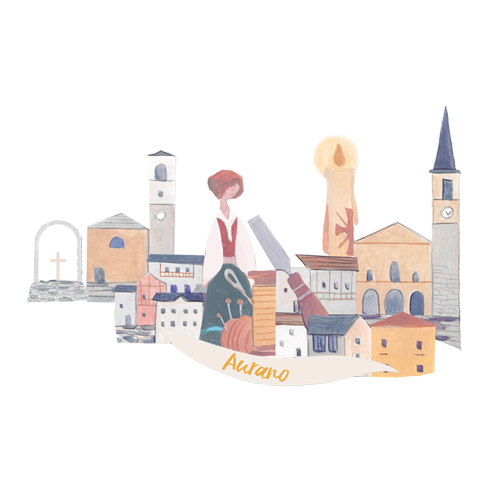Il toponimo Biogna compare già in alcuni documenti del XVII secolo. Un documento del secolo successivo, sottoscritto in data 5 agosto 1769 è oltremodo importante per ricostruire la storia dell’alpeggio; esso riporta il contratto di affitto del diritto di pascolo del «Corte di Biogna» concesso dalle Comunità di Cissano ed Arizzano (che a quel tempo erano proprietarie di alcuni appezzamenti in questa zona) ad alcuni uomini di Intragna, che si impegnavano a pagare un fitto annuo.
Con il toponimo Biogna si identifica una porzione di territorio che ospita numerosi alpeggi distinti, un ampio comprensorio di cürt e pascoli posto alla testata della Valle Intrasca, nel territorio del Comune di Aurano. In posizione più o meno baricentrica ad essi, vi è “la Gesola” la piccola chiesa come lascia intuire il nome, ossia una cappella dedicata alla Madonna nel cui interno è significativamente presente l’affresco che la ritrae attorniato dall’invocazione «Salvaci Maria dai fulmini e le tempeste». A differenza di altri alpeggi delle valli verbanesi, non è del tutto abbandonato: Curt di Ferìì, Curt La Piazza, Curt dul Piazzin, Curt dà Barca, Curt la Funtana e Curt da Pùnt sono i nomi degli antichi maggenghi ancora frequentati dai discendenti dei vecchi alpigiani, tutti localizzati sopra la Gesola, mentre sotto di essa i restanti corti sono tutti disabitati e ormai in parte diroccati. Il luogo nel medioevo era frequentato dagli abitanti di Aurano, Arizzano, Vignone e altre località della Degagna di San Martino – come ad esempio Bèe – che si recavano su questi monti con i propri armenti al pascolo e per coltivare piccoli campi. Una parte dei pascoli di Biogna era utilizzata anche dagli abitanti di Intragna.
The toponym Biogna already appears in some documents of the 17th century. A document of the following century, signed on 5 August 1769, is extremely important in order to reconstruct the history of the mountain pasture; it contains the lease for the right of pasture of the “Corte di Biogna” granted by the Communities of Cissano and Arizzano (which, at that time, owned some plots of land in this area) to some people of Intragna, who committed themselves to pay an annual rent.
The toponym Biogna refers to a portion of territory that hosts many mountain pastures, a large area of “cürt” and pastures at the head of the Valle Intrasca, in the municipality of Aurano. In the middle, there is “the Gesola”, a small church as the name suggests, that is, a chapel dedicated to the Virgin Mary; a fresco depicts the Virgin Mary and is surrounded by the invocation "Salvaci Maria dai fulmini e le tempeste” (“May Mary protect us from lightning and storms”). Unlike other mountain pastures in the valleys of Verbania, the following are not completely abandoned: Curt di Ferìì, Curt La Piazza, Curt dul Piazzin, Curt dà Barca, Curt la Funtana and Curt da Pùnt are the names of the ancient mountain pastures still frequented by the descendants of the old alpine inhabitants, all located above the Gesola, while below the remaining “Curt” are all uninhabited and now partially tumbledown. In the Middle Ages the place was frequented by the inhabitants of Aurano, Arizzano, Vignone and other villages of the Degagna di San Martino – such as Bèe – who moved to these mountains with their herds to pasture and cultivate small meadows. Some of the pastures of Biogna were also used by the inhabitants of Intragna.
TI TROVI A
YOU ARE IN
